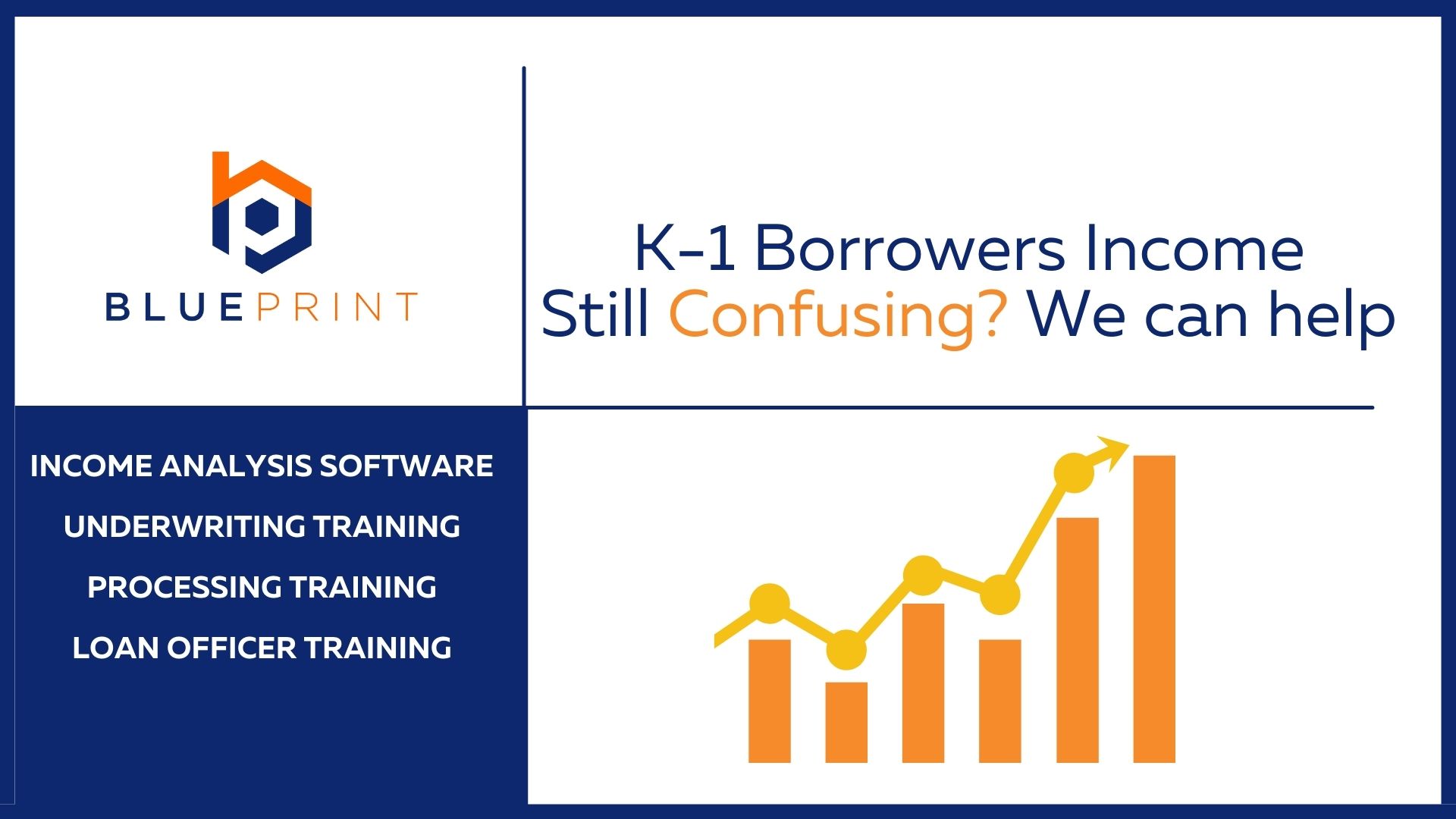Calculating K-1 income for self employed
K-1 income for self-employed borrowers is one of the most common questions we receive. We understand—it’s complicated. As mortgage professionals, we aren’t tax experts, but since self-employed individuals make up a significant percentage of potential borrowers, it’s crucial to understand how to calculate K-1 income correctly.
Key considerations
First, it’s essential to understand that the K-1 is a tax document, not an income document. Mortgage underwriting focuses on the income available to pay the mortgage, not taxable income. While this might sound like semantics, it’s a critical distinction that can cause post-closing issues.
Let’s look at an example with an employed borrower to clarify the difference between taxable and gross income:
- Borrower’s VOE (Verification of Employment): Lists salary as $100,000 per year.
- Borrower’s W-2 (Box 5): Shows “wages, tips, other compensation” as $90,000.
Does the borrower earn $90,000 or $100,000? The answer is $100,000.
Why? The W-2 shows taxable income, not gross income, which is used for qualification. The discrepancy is often due to pre-tax deductions like 401(k) contributions or medical benefits.
This concept also applies to K-1 forms, where many mortgage professionals mistakenly use Box 1 without further analysis. For loans backed by Fannie Mae (FNMA) and Freddie Mac (FHLMC), additional steps are required to validate the borrower’s actual income.
Receipt and liquidity are key
Fannie Mae and Freddie Mac require lenders to confirm the receipt and liquidity of K-1 income. This process ensures the borrower’s income qualifies for mortgage purposes.
Here’s how to do it:
- Evaluate Business Stability
- Use the business tax return (Form 1088). If the business is stable, proceed to the next step.
- Analyze Personal Income
- Calculate income by adding the borrower’s W-2 earnings to relevant K-1 lines:
- Line 1: Ordinary business income
- Line 2: Net rental income
- Line 3: Other income
- Line 4C: Guaranteed payments to partners (if applicable).
- Calculate income by adding the borrower’s W-2 earnings to relevant K-1 lines:
- Adjust for Cash Flow
- Based on the borrower’s ownership percentage, adjust personal income by adding or subtracting cash flow impacts.
- Confirm Receipt of Income
- Validate income through either:
- Distributions: Found on Box 19a (K-1 1065) or Box 16D (K-1 1120S).
- Liquidity Test: Use the business’s Schedule L balance sheet to confirm the business could have paid the borrower.
- Validate income through either:
Liquidity Testing in Detail
For K-1 income to count as gross income (not just taxable), Fannie Mae and Freddie Mac require liquidity testing. This involves verifying that the borrower has received (or could receive) the income. Here’s how:
- Distributions: Evaluate Line 19a for K-1 1065 or Line 16D for K-1 1120S.
- Schedule L: Review the balance sheet to confirm the business’s ability to make payments.
For detailed guidance, refer to:
FHA/VA/USDA Loans
Unlike Fannie Mae and Freddie Mac, government loans (FHA, VA, USDA) do not explicitly require liquidity testing for K-1 income. For these loans, you can generally use the amounts shown on K-1 lines 1, 2, 3, and guaranteed payments to partners (Line 4C on the 1065). While liquidity testing is a best practice, it is not explicitly mandated by these programs.
Summary
Calculating self-employed income—especially from K-1 forms—requires more than simply reviewing a company’s net profit. It involves a structured process: confirming ownership, evaluating business stability, assessing personal income, and validating the business’s financial health. K-1 income is particularly complex, but following these steps ensures accuracy and compliance.

